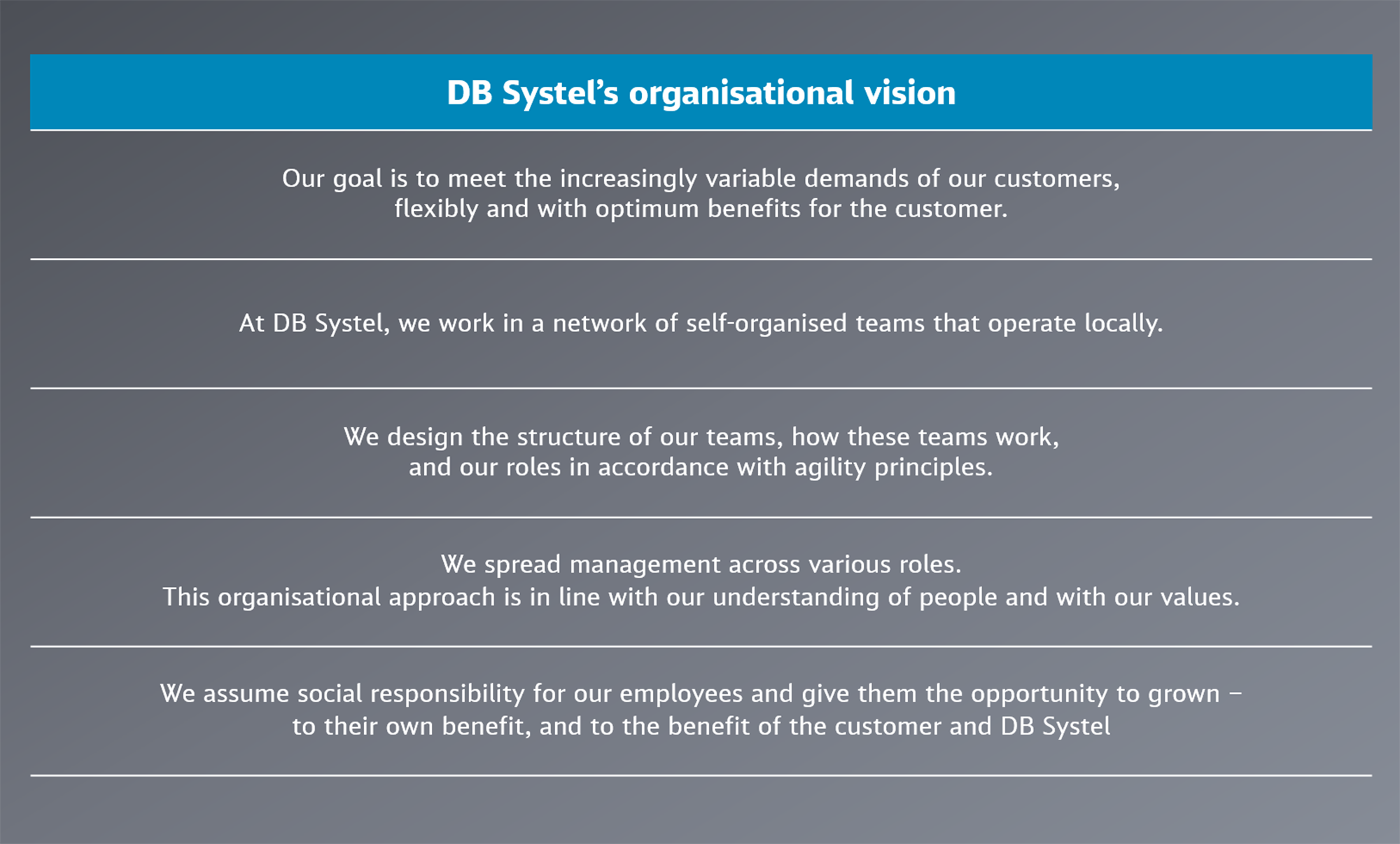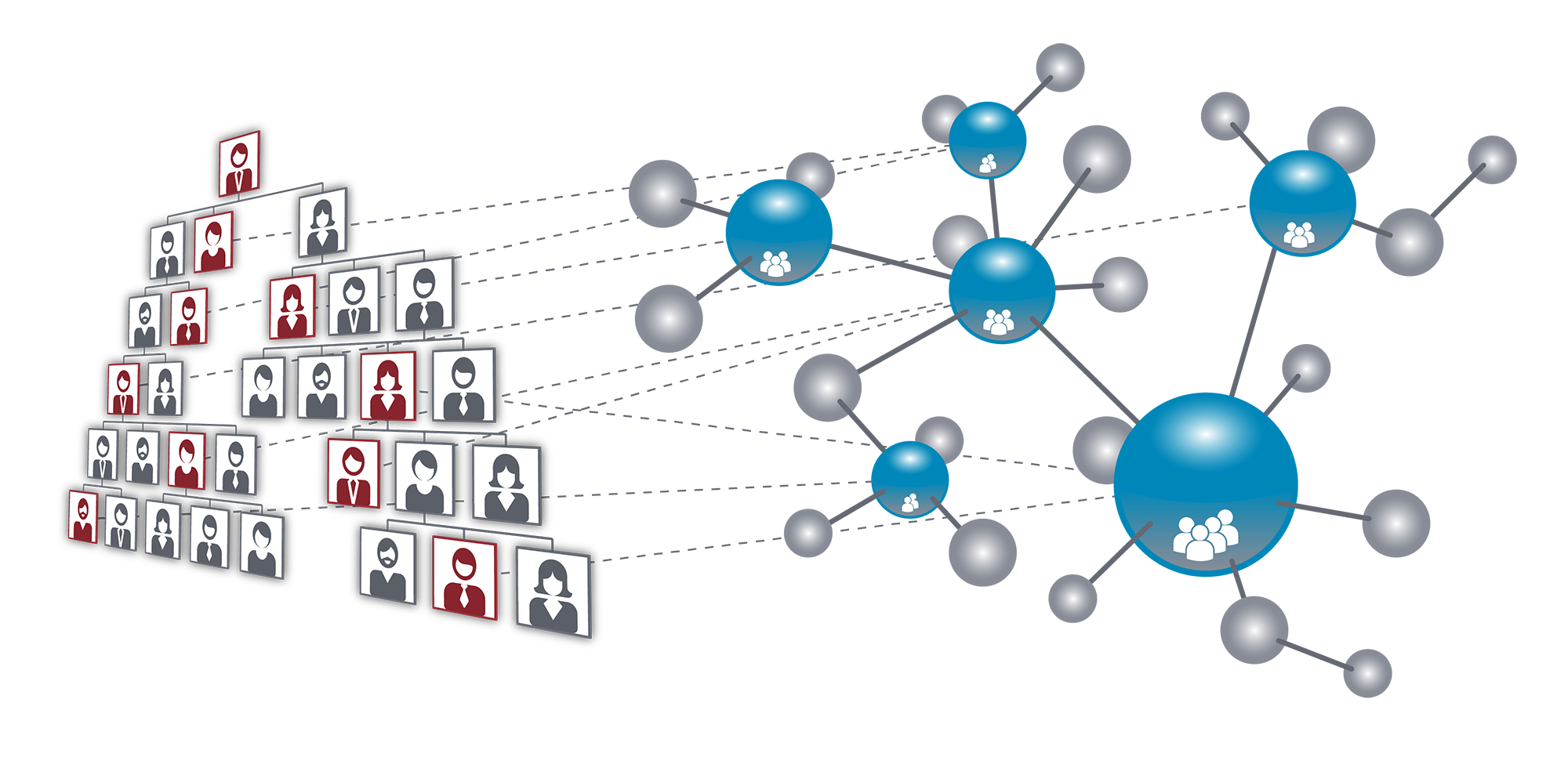Working without a boss
Article: Self-organisation in the service of customers
09/2017 – A growing number of companies now report that they are changing their modus operandi and intend to work with flat hierarchies or even without bosses. But why are they doing this, and what benefits does the new approach offer? As part of digital spirit's Work 4.0 series, this article spotlights the background to this way of working, and the associated procedures and advantages.
The hip startups are showing the way – in the context of digital transformation, their innovative ideas are turning whole markets upside down and throwing major corporations off balance. But new and unconventional ideas are not the only danger for established players. The main threat comes from how these startups operate: they develop their products at breathtaking speed, leveraging close contact with their customers of a kind that traditionally structured companies with conventional processes find hard to match. Three years ago, DB Systel faced the problem of being perceived as insufficiently innovative and thus not fit to tackle the challenge of digitalising Deutsche Bahn. All this changed with the Digital Summit and the tagline “Ahead of most of the others out there“.
But how did this come about? One important reason for the change – besides the in-house creativity through unlocked by projects like Skydeck – is the change of attitude within the company. What is important these days is not just figures and hitting targets, but also “satisfaction”. The key factors here are employee satisfaction through self-organisation, plus long-term customer satisfaction. “Customer-centricity” is one of the elements of this new attitude. People who think “Well, we already have an agile working method thanks to scrum, which puts customers centre stage” often fall short of the mark. This is because “agile working” is a method. Self-organisation, by contrast, focuses primarily on how people interact with each other – whether they are employees (who assume responsibility), managers (who hand over responsibilities) or, most importantly, customers.
Equality
In German, you will often heart the word “Augenhöhe” (“equal footing”) in discussions of self-organised working. The aim is to collaborate or communicate with others “on an equal footing”; in other words, without hierarchical distinctions. In Germany, this concept was a driving force behind the 2014 “Augenhöhe – Film und Dialog” crowd-funding project:
“The film AUGENHÖHE goes to where change, in its most positive sense, is shaped. We visit companies and pioneers who are adopting a different approach to crucial tasks and are doing many things more effectively. This is where fairness, innovation, individual responsibility and teamwork are practised values and not just empty rhetoric.” Project description (German only) “Augenhöhe – Film und Dialog“
The money raised through crowdfunding not only resulted in the making of a film; more importantly, it initiated dialogue. The idea was that the film should also spark discussions at companies about work and firmly established structures.
This message reached DB Systel at a time when the company was already planning to restructure in order to tackle the challenges of digital transformation. One of the topics covered by the “Code Future” strategic initiative was “employees, management, culture”. This proved to be fertile ground for the ideas of the “Augenhöhe” movement, which were supplemented by other methods such as Management 3.0 and brought together to create a model that was right for DB Systel. In this model, mindset plays a key role. Two central aspects of the new modus operandi are assuming responsibility for one’s own actions and close teaming with colleagues. These considerations and the energy generated by the voluntary, and thus self-organised, initiatives ultimately provided the impetus for transforming DB Systel into an agile, self-organised and networked company as well as for a corresponding organisational vision:
The idea at the heart of the transformation is to subdivide the company into small, highly effective teams comprising between five and nine employees, who are responsible for their goals and can take customer-centric action, but still contribute to the greater whole. This involves splitting the managerial responsibility of a traditional boss into the following three roles:
- The Agility Master is responsible for targeted development of self-organisation and the empowerment of the implementation team that this requires. He or she removes obstacles and moderates all team events.
- The Product Owner gathers the customer’s requirements and prioritises them. He or she is authorised to make content-related decisions about the service and its characteristics.
- The Implementation Team is responsible for delivering the service. On the basis of the requirements prioritised by the Product Owner, the team plans the goals and is responsible for achieving them.
Breaking responsibility down into these three roles clearly shows that working without a boss does not necessarily mean working without structures and goals. In fact, quite the reverse is true. Often the framework for processes and structure is more narrowly defined than in traditional hierarchies. But redistributing functional and content-related responsibilities gives individual employees more flexibility, enabling them to work more autonomously within their particular area, to the extent possible, while assuming more responsibility. With its focus on explicit customer requirements and its ongoing monitoring, this approach to work is also considerably more efficient than conventional requirements catalogues, for example.
Self-organisation is not a matter of “I’ll do what I feel like doing”. Rather, it is about using the available options to rapidly and incrementally implement customer requests in small teams while adhering to fixed processes. The aim is to avoid the disruptive influence of a hierarchical organisation. These teams often already collaborate very closely with the customer. This can be achieved by having a representative of the customer working directly on the team or by holding regular reviews involving the customer.
Challenges of self-organisation
The euphoria regarding the freedom experienced in self-organisation notwithstanding, not everyone is able to work this way immediately, and some will need support. For example, many employees must first learn the positive approach to dealing with errors that is part and parcel of self-organisation. Some need the greater security or protection formerly provided by supervisors in order to do their work. In many cases, training is also needed in communicating openly on an equal footing. And escalations and dissatisfaction have to be handled in unfamiliar ways. To meet these challenges, DB Systel provides resources such as dedicated coaches and mediators.
If you talk to employees who already work in self-organised teams, most of them cannot imagine working in a traditional team with a boss again. What they enjoy most is being close to the customer and having control over their own work. Both of these are key factors in increased employee satisfaction in self-organised environments.
But DB Systel is not the only part of the Deutsche Bahn Group where you will find examples of self-organisation. For example, starting this year, the human resources department of DB Vertrieb has been working in agile teams. And customer-centricity and agile teams are also key factors in increased customer satisfaction at Südostbayernbahn in southeast Bavaria. The Group’s DB Planet social network has a number of groups with extensive networks and fosters dialogue between the various initiatives within the Group.
Together with agile methods, the changes in attitude resulting from self-organisation create a powerful combination that enables large companies like Deutsche Bahn to keep pace with startups and optimally deploy the strength derived from their networked employees’ knowledge to the benefit of their customers.




